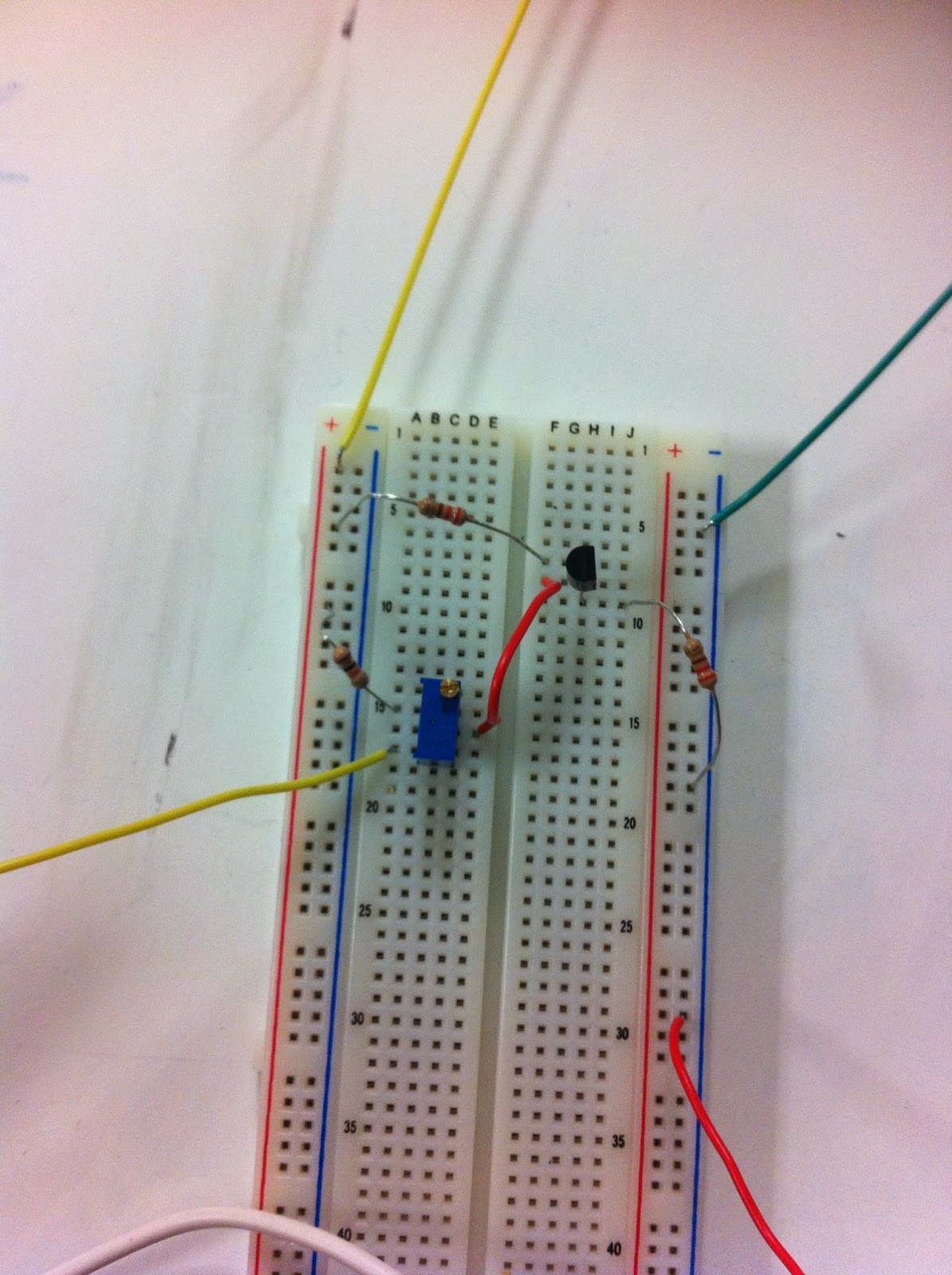The purpose of this lab is to condition a signal from a voltage input to a required voltage output.
- Set up voltage divider circuit in order to obtain signal voltage in DC
- Set up Inverting op amp circuit that conditions signal from 0 to 1 v to 0 to -10v
- measure the values
- conclusion
Procedure:
We first consider the entire circuit and determine the necessary resistors
-The sensor may only output a maximum of 1mA of current.
V_cc = 12 V.
V_ee = -12 V.
V_in = 0 V to +1 V.
V_out = 0 V to -10 V.
We then create a voltage dividing circuit that will condition the input voltage to the specifications of the signal.
R_y = 909 Ohm
potential drop for R_y should now be 1 volt. the pot may be decreased at any point to reduce the voltage.
To be sure, we would like to calculate to make sure R_x will not be over its power limit (1/4 watts).
The minimum resistance that would prevent unnecessary overpowering for R_x is 1152 Ohms, but we will use 1300 ohms as the bare minimum to be safer.
If we were to use the 1300 Ohm resistor, we calculated the value of R_y needed for the potential drop to be 1V.
R_y = 118 Ohm
But the low resistance might condition the OP amp to unappreciably "load" the divider ciruit, so we will use a 10k Ohm R_x value.
These values are what we used for our model.
By decreasing the value of the POT to a value lower than 909, we were able to obtain necessary voltages for the signal input.
Our Circuit and stuff.
More Pictures of the circuit and stuff
The results.
Conclusion:
The results conclude that there was a gain of -10 through the OP amp, which conditioned the signal to the desired voltage. The current was never over 1 milliamp, and the voltage divider resistor did not burn. The experiment was a success.


























.jpeg)
.jpeg)























